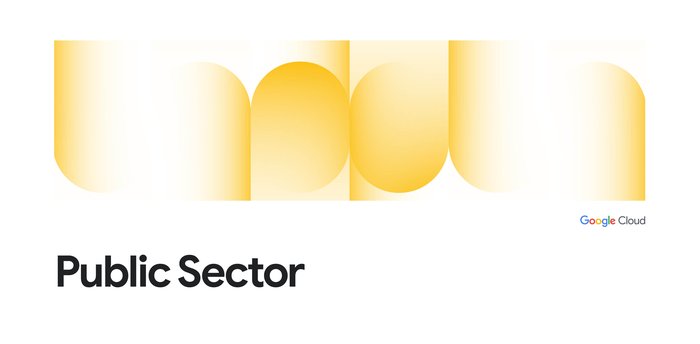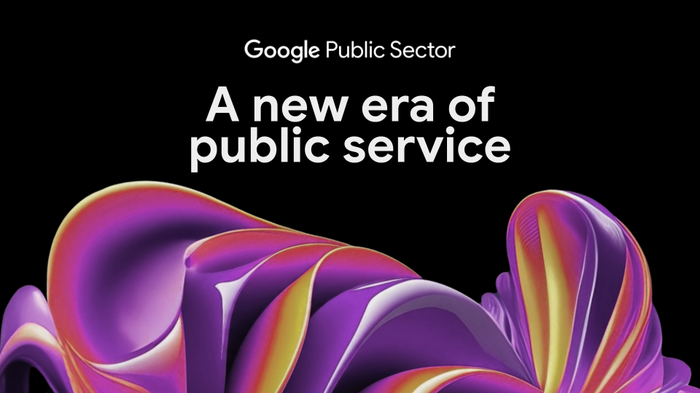Innovating and experimenting in EMEA’s Public Sector: Lessons from 2020–2021
Filipe Gracio
Customer Engineer, Government, Google Cloud
By now, we’ve answered the question of whether public sector agencies can innovate, transform, and operate with a remote workforce. They can do so quite well. Government organisations worldwide have been using technology to manage remote work challenges and continue to provide services to constituents. In my role as a Customer Engineer for Google Cloud in EMEA, I see opportunities to innovate by using technology and want to share how government agencies across Europe embraced new methods to gain efficiencies and tremendous cost savings.
Transformation is happening now
Public Sector organizations and Google alike changed the way they provided services. At Google, for example, Google Meet hosted 1 trillion minutes of video calls during 2020, and usage increased exponentially from previous levels. We saw many public sector customers change the way they operated to continue providing services to their constituents:
The UK’s National Institute for Health Research built a digital hub on Google Workspace, allowing users to continue to work without pause. The use of Google Meet went up by 379% within two months of quarantine, and users shared and collaborated on documents more frequently, with Drive usage increasing by 198%.
Instead of relying on legacy on-premises solutions, the city of Trondheim in Norway turned to Google Cloud and Google Workspace to help city employees work together and stay connected in these difficult times. Google Meet also allows the city to continue governmental meetings and keep classes running in schools.
Over in the United States, the Illinois Department of Employment Security deployed Google Cloud Contact Center AI when the volume of requests for help spiked to 11 times the normal amount. It took only four weeks to roll out a system that supports millions of people. The virtual agent answered 3.2 million inquiries in its first two weeks, helping the state pay unemployment benefits on time to 99.99% of claimants.
Keep the momentum going: Empower, automate, experiment
There are a few things public sector agencies can do to keep the momentum going and take advantage of technological innovation.
Enable remote lifelong learning: Google has a wide variety of lifelong learning resources, including numerous training materials—such as IT certificates—with specific EMEA programmes. As the pandemic accelerates changes in how and where we work, many of us will need to upgrade our skills or even change careers. The new Google Career Certificates enable people to become job-ready for growing career areas, such as IT Support, Project Management, UX Design, and Data Analytics, and are available online on Coursera.
Increase efficiency with virtual agents and AI: Artificial intelligence capabilities can save time and increase productivity for government employees and the public. For example, Rhode Island’s government is harnessing the power of artificial intelligence (AI) and machine learning (ML) to connect the state’s workforce with pathways to new careers. Conversational technologies like Google Cloud Contact Center AI help governments handle large volumes of inbound interactions with constituents. Similarly, automating the manual processing of documents (images, PDFs, and more) with Google’s Document AI saves time, increases efficiency, and frees employees to perform more meaningful work. Google helps with all kinds of government forms, including specialised content extraction for procurement documents.
Innovate in healthcare technology: Moorfield’s Eye Hospital uses Google Cloud’s AutoML to allow clinicians, without prior experience in coding or deep learning, to develop models that accurately detect common diseases from medical images. Johns Hopkins uses AI algorithms to improve treatments in stroke survivors, reducing the time needed to evaluate brain scans from 5 hours to 30 seconds. With the help of Google Cloud’s AutoML, AI, and analytics tools, Emory University can better predict the likelihood of sepsis in patients. The ETH Zurich and the Wellcome Sanger Research Institute are using Google Cloud’s multi-cloud solution, Anthos, to help researchers collaborate and share their analyses more effectively.
Make data-driven decisions: During the pandemic, public sector agencies have been using sentiment analysis and mobility data to inform government policy. In particular, public health agencies can use this technology to evaluate the acceptance of COVID-19 vaccines.
Experimentation has provided great benefits over the past 12 months. I’m excited to work with the Public Sector to continue experimentation and sustain improvements in efficiency and cost reduction—the innovations that drive growth. Public sector agencies have the opportunity to try many low cost and low commitment experiments that will save money and increase efficiency. The key is to keep moving forward and not let the pace of innovation slow down as things begin to return to normal.
If you work for any public sector organisation, we welcome you to sign up to Google Cloud’s public sector community and talk with other public sector technologists about how they are building innovation.



